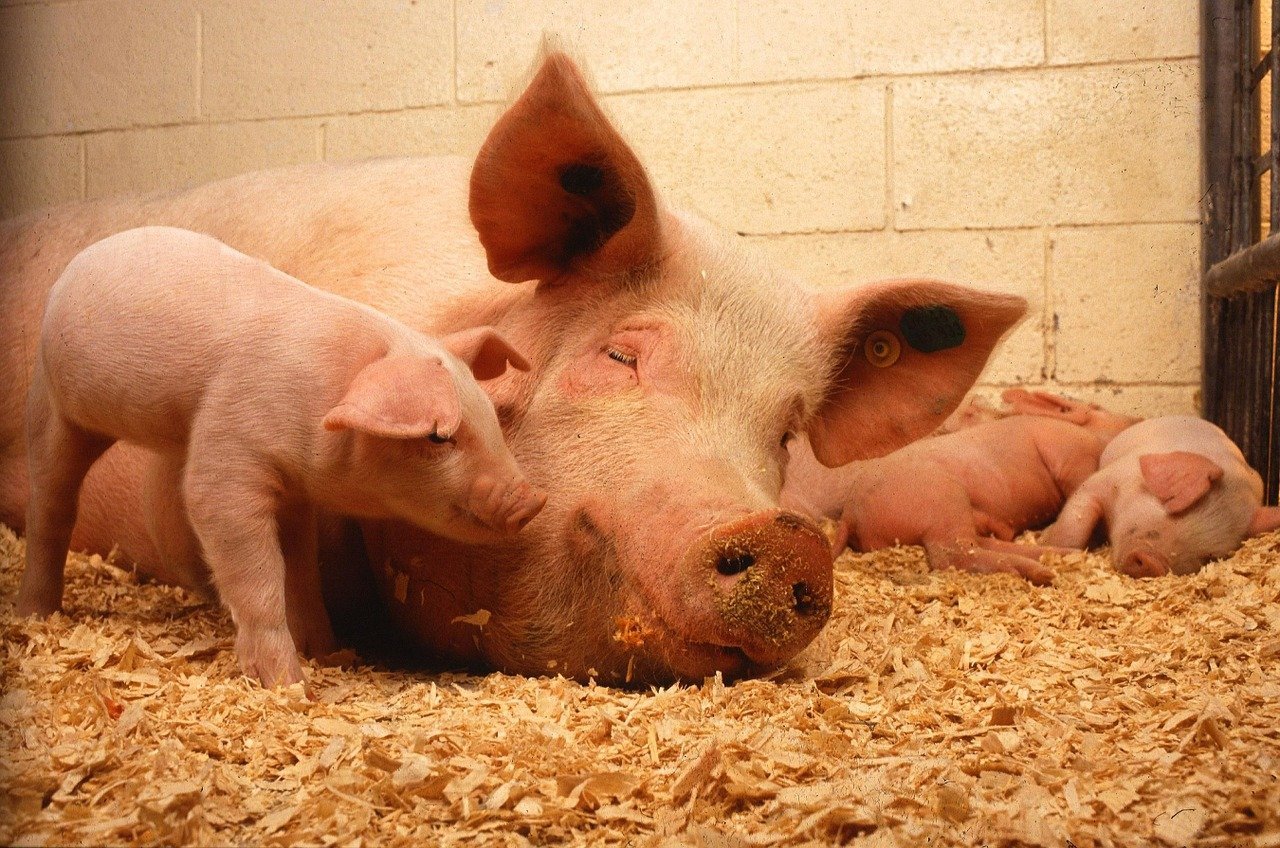High crude protein feed is very essential for pigs, especially when they’re still in the growth stage.
The role of amino acid or what protein does to pig generally is to assist in fast growth and healthy muscles.
To fatten up your pig, you really need protein and carbs. Protein sources for feeding pigs are either plants or animals.
Proteins of plant origin consist mainly the legumes. The seeds of legume contain starch that is poorly digested when it is raw but improves positively when cooked.
Other common pig protein supplements are also canola, peanut, peas, Lupins, etc. They are used in making their feeds.
The seed of legumes contains high levels of crude protein and better amino acid balance when compared with the cereal grains.
Types of Legume seeds for Pigs
Legume seeds can be classified into the oilseeds and non-oilseeds as well as foliage from legume trees.
The proteins of animal origin are in most cases higher in crude protein than those from plants with better amino acid balance.
Their use is, however, limited in animal feeding because of the high cost associated with them.
Oilseeds
- Groundnut meal
Groundnut meal or groundnut cake has been a conventional protein source in feeding pigs. It’s one of the important feed ingredients and a source of protein.
The crude protein could be as high as 45% and the nutritive value is close to soybean.
It is however low in methionine and lysine and marginal in tryptophan.
Therefore, for groundnut cake to be effectively utilized, the feed must be supplemented with methionine and lysine feed sources such as soybean meal, fish meal and blood meal.
Groundnut cake becomes rancid when stored for a long time and there could also be the possibility of aflatoxin contamination.
Aflatoxin is poisonous and may lead to a decrease in growth and even death of animals.
- Soya bean
Soya bean meal is the best plant protein source with crude protein being similar to that of groundnut but with better amino acid balance.
It is rich in both lysine and tryptophan but low in methionine. You can feed a whole soybean to swine once in a while.
You can as well balance soybean meal to cornmeal in a ratio of 1:10. A good mix of cornmeal and soybean is very essential.
However, the use of soybean in animal feeding is limited due to the content of anti-nutritional factors.
Common among these are the protease inhibitors (trypsin inhibitors), and hemagglutinins, saponins, and soy.
This is the reason some preferred to feed their swine with roasted soybean and you can do this on your own.
The inhibitors are removed when the raw seeds are cooked by boiling, roasting and autoclaving.
- Sesame meal
Sesame meal or beniseed meal has a feeding value of about 90% that of soya bean meal.
Methionine and tryptophan levels are high as against lysine that is deficient.
It has to be supplemented with feed ingredients high in lysine for successful use in pigs and poultry feeding.
- Cottonseed meal
Cottonseed meal is limited to mainly pig feed and even then, it is infrequently used and at low rates of inclusion.
Some processed meals contain a toxic substance known as gossypol which is poisonous to animals and this is responsible for the limited use.
Non-Oilseeds
These are mainly beans and many are used as food by humans.
Their crude protein range from 20 to 25% and contain poorly digestible starch, which must be cooked to improve.
The cooking process also reduces the strong odor normally associated with the raw seeds.
Some of the non-oilseeds have been included in the rations, not pigs to replace part of the high costly conventionally used oilseed cakes such as groundnut cake and soya bean meal or cake.
Among the non-oilseeds are jack bean, Lima bean, pigeon pea, and Bambara groundnut.
These non-oilseeds legumes like their counterpart also contain a lot of the anti-nutritional substances and processing procedures used in soya bean meal is also effective in them.
Conclusion
The main ingredients in pig feeds are carbohydrates, protein, fats, and vitamins.
Protein may not be required in large proportion in the feed but it’s very important for healthy growth and muscle development.
Protein in pig feed is usually between 10 to 20 percent. How much protein you need actually depends on the pig, the purpose of rearing and the growth stage.

Growing up in a family deeply rooted in agriculture, I developed an early passion for cultivating the land, caring for animals, and exploring sustainable ways to improve farm productivity.
I’ve worked extensively across multiple areas of agriculture, food and cash crop cultivation, poultry farming, fish farming etc.
At FarmPally, I enjoy sharing practical insights drawn from real-life experiences to help farmers, pet owners, and agriculture lovers make informed, and sustainable decisions.

